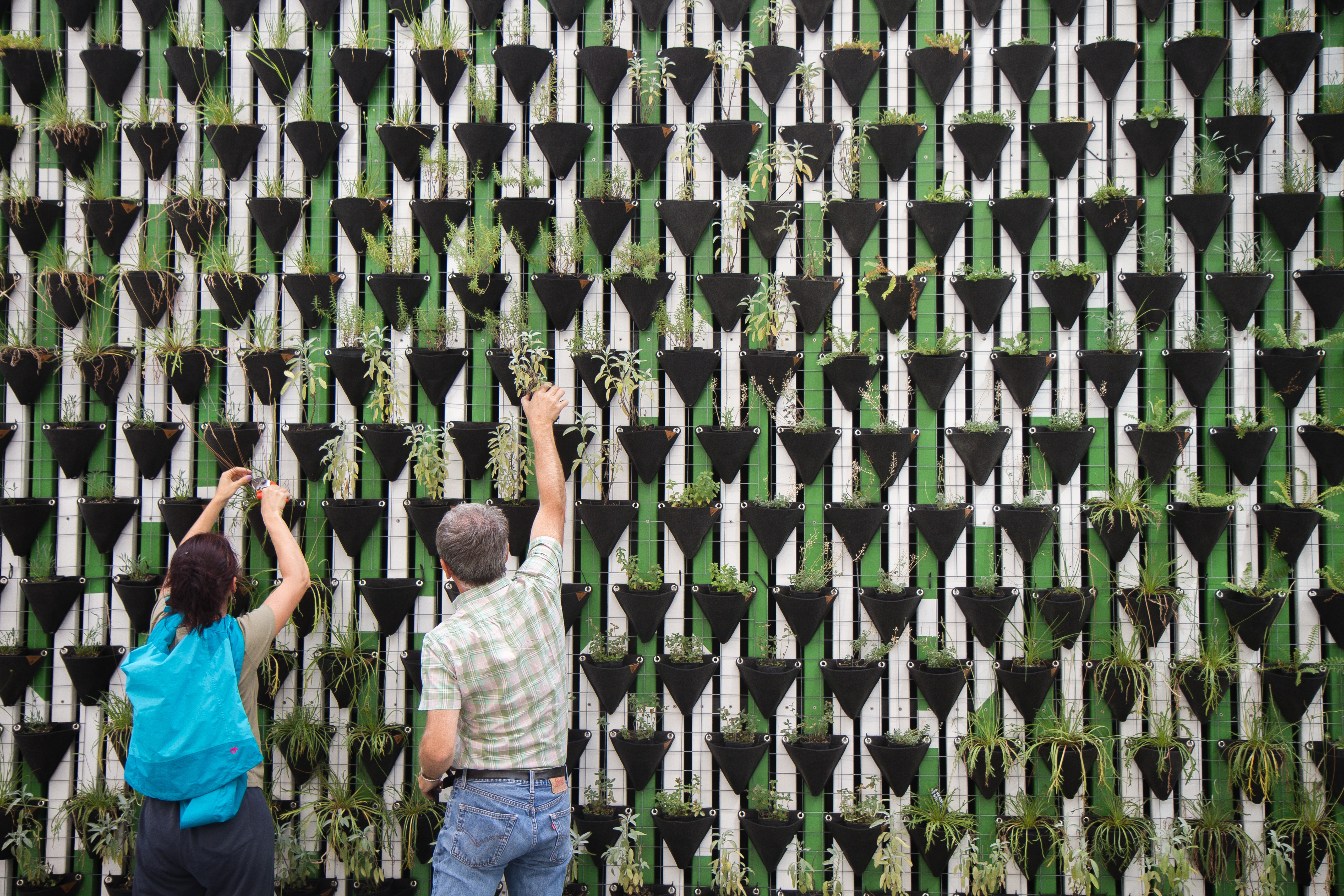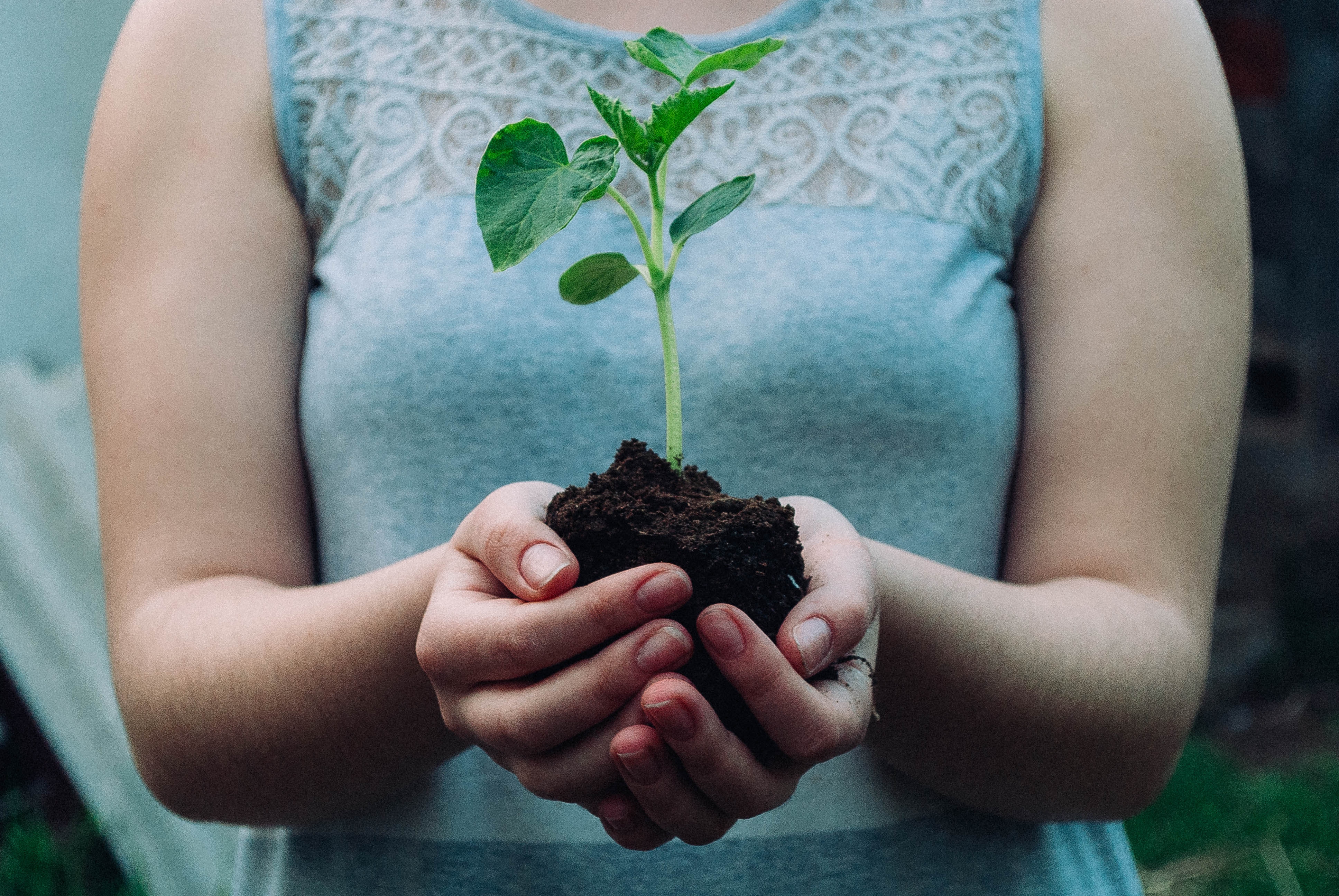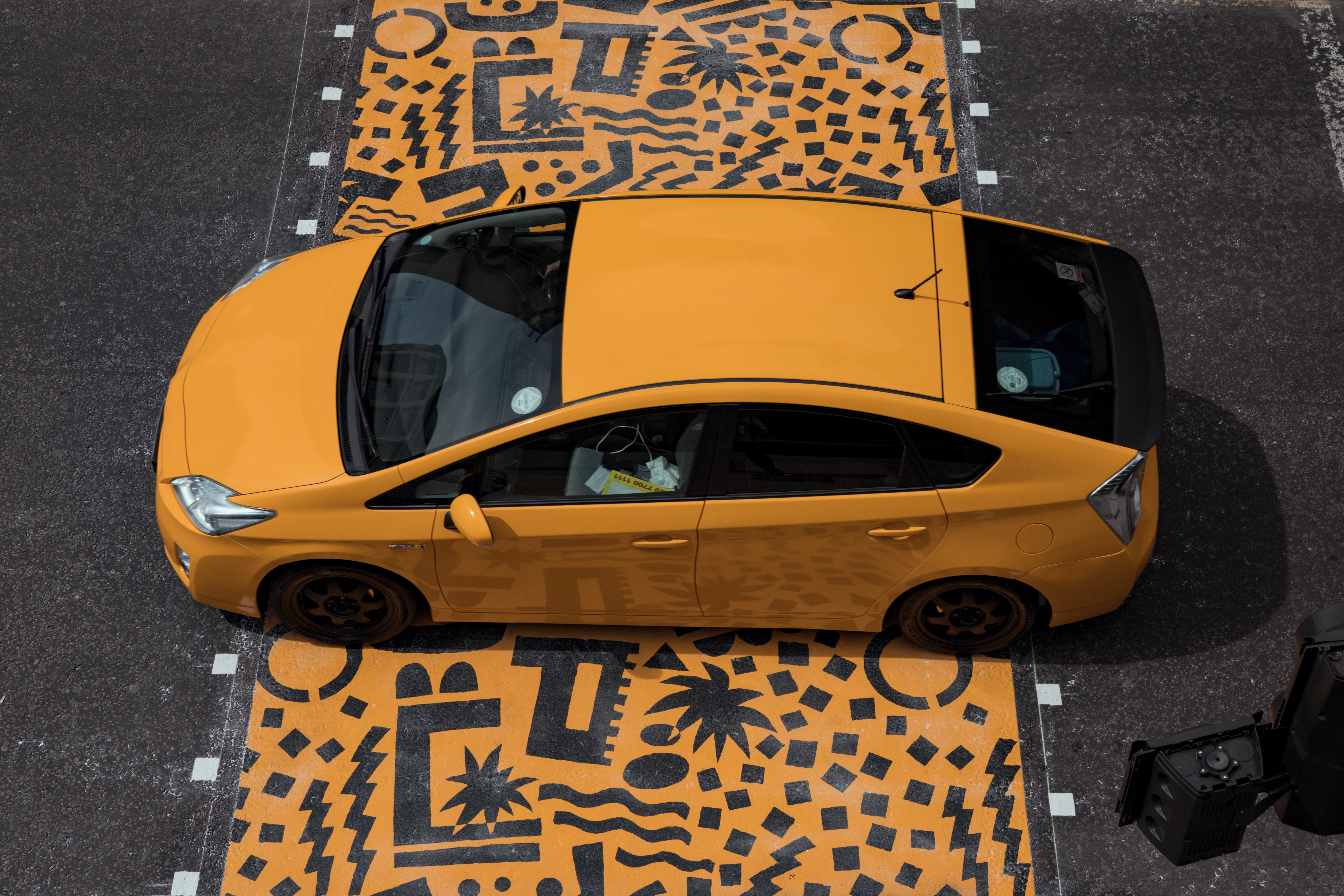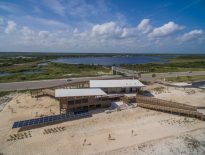Let’s begin with a few simple definitions.
Footprints are the environmental and social impacts of the processes that sustain us.
(These processes sustain us by directly or indirectly supplying every good and service we buy or experience.)
Handprints are changes to environmental and social impacts that we cause outside of our footprints.
With footprints, we tend to use positive numbers to reflect burdens or detrimental impacts. For example, a carbon footprint of 2 tons CO2 is worse than a carbon footprint of 1 ton CO2. With handprints, we also use positive numbers but they reflect benefits or positive impacts—a handprint of 2 tons CO2 is better than a handprint of 1 ton CO2. A natural goal is to shrink our footprint and grow our handprint. We sometimes use the term “Net Positive” to refer to having a handprint larger than our footprint.
Now let’s bring these definitions alive with some examples from everyday life.

When I turn on a light to read a book, I use electricity. If the electricity to my building is supplied by the grid, there is probably a fossil fuel-powered generation station somewhere that produces a bit more power so that now I can have light. The additional pollution going out of the smokestack at the power plant to generate the electricity for my light grows my footprint.
In fact, the light I’m using has many footprints, as do I. Some of the pollution from that smokestack includes greenhouse gases, notably CO2, which contribute to climate change. So my light has a “carbon footprint.” Other pollution includes primary particulates (PM) and gasses like SO2 and NO2 that lead to additional particulate formation; collectively these particulates raise the risk of respiratory illnesses and even death for people living downwind of the power plant. So my light has a “health footprint.” The coal used to fuel the power plant came from a mine, the operation of which impairs ecological habitats, so my light has a “biodiversity footprint.” The coal was mined and transported by equipment that used fossil fuels, so somewhere in the supply chain of the book I’m reading is probably the extraction of crude oil in Nigeria, a process that risks violating the human rights of workers involved. Therefore, my light and I have various human rights footprints including a “forced labor risk footprint.” My innocent act of turning on a light to read has unintentional ripple effects literally around the world!
My footprints are the sum of all of the environmental and social impacts that occur across the global supply chain of every good and every service that I buy and use to sustain and conduct my life. We tend to report footprints on an annual basis, so my 2018 footprints will be the sum of all the impacts of producing and delivering and using and disposing of everything I bought and used and disposed of during 2018.
But don’t blame just me and the book I’m reading! You have footprints too! So does every person, and every organization. Indeed, as long as there is forced labor in the world, we all have forced labor footprints since we all depend on global supply chains. In his magisterial Letter from a Birmingham Jail, Martin Luther King wrote: “Injustice anywhere is a threat to justice everywhere. We are caught in an inescapable network of mutuality, tied in a single garment of destiny. Whatever affects one directly, affects all indirectly.” Dr. King was referring to more than the global supply chains that sustain each person and organization on earth, but these supply chains are an important part of the “network of mutuality” of which he wrote.

It’s not all bad news. Good things can happen within those supply chains too. People earn money, and for some, this income may help end poverty for themselves and their families. Some processes do good things for the environment too. Tomatoes and trees can be cultivated in ways that build up soil carbon and health over days and years. Coffee can be grown in ways that actually increase biodiversity, relative to what would otherwise take place on that land without human intervention. Factories can be operated in ways that discharge water into a river that is cleaner than the water they take in. Supply chains can be forces for healing and progress, environmentally and socially. So some of the ripple effects in my footprint can in fact be positive.
Another part of the good news is that the “inescapable network of mutuality” in which we live includes other pathways of inter-influence in addition to those of commerce—the inputs and outputs of goods and services that form the backbones of our footprint systems and our supply chains. To put it simply: we do more than just buy, sell, use and discard. We also influence one another, we touch each other’s lives in innumerable ways. We create, we plan, we share, we nurture, we dream—and we work hard to bring some of these dreams to life. We create ripple effects through pathways other than commerce too; we create ripple effects outside of our footprints. Handprinting is largely about using these other pathways of influence as a force for good in the world.
Let’s look at the definition of handprints again: Handprints are changes to environmental and social impacts that we cause outside of our footprints.
It helps to look at this definition piece by piece. Let’s start with the phrase “environmental and social impacts.” That same phrase appeared in the definition of footprints, and that’s no accident. Handprints address the same impact categories as footprints. I sometimes say: if there aren’t footprints for that impact, then it’s not a handprint, it’s a co-benefit. For example, let’s say that you take an action which helps to raise a child’s emotional security. This is a great impact, a beneficial one to be sure. But since we don’t tend to have “childrens’ emotional security footprints,” neither would we speak about creating childrens’ emotional security handprints. Instead we would say that whatever the footprints and/or handprints of this action might have been, it also had at least one social co-benefit: it raised the emotional security of a child. So, in summary, handprints are footprint-related environmental or social impacts; they are measured in “footprint units.”
Next, let’s look at the phrase “outside of our footprints.” If I reduce my own footprint, that’s great, but it’s just that—reducing my footprint. It’s not creating a handprint. Handprints are action outside of my own footprint. If I replace my incandescent light bulb with an LED, I will use less electricity the next time I read my book and for some time to come. Even though manufacturing the LED comes with its own set of footprints, this bulb is so much more energy efficient that I will soon reduce my total carbon footprint, my health footprint, my biodiversity footprint, and probably my forced labor footprint too. Reducing my own footprint is a great place for me to start, but it’s also a tragic place for me to stop.
What if I use some of the economic savings that my LED bulb provides me to buy another LED as a gift for a friend? Doing this will reduce my friend’s footprint. The benefits for the climate, human health, biodiversity, and human rights will be part of my handprint in the world: they are changes to environmental impacts that I will have caused, outside of my footprint.
There are two ways for me to cause footprint-related impacts outside of my own footprint. First, I can cause an impact on somebody else’s footprint, as in the example above. Second, I can cause impacts that are measured in footprint units even if they do not represent a change in anybody’s or any organization’s footprint. Planting a tree is a great example of the second kind of handprint: the tree will reduce the atmospheric concentration of CO2 and thereby bring benefits measurable in carbon-footprint units. It might also play a role in increasing biodiversity or human health, two other categories of footprint-related impact.

Now let’s zoom in on this part of the definition, changes “that we cause.” Causing change means making things different in the world. Different from what? From how they would otherwise be, if I just minded my own business and didn’t exert any influence on the footprints of others. If my friend would not have otherwise replaced their incandescent bulb with an LED, then I’m causing a handprint. But let’s linger a bit longer on that innocent word “change” in the definition of handprints. How would things have gone if I never gave the gift to my friend? We have to admit that we’ll never truly know. We can never witness both the future with our actions, and the future without our actions, making it impossible to compare or calculate the difference.
This invisible scenario of “how things would otherwise have gone if we just kept to ourselves, minding our own business and our own footprint and not exerting any influence on the footprints of others,” is called “Business as Usual,” abbreviated “BAU.”
When our handprinting action involves changing the footprint of others, the simplest way to estimate what would have happened with BAU is to ask the person or organization affected. If our friend tells us that they wouldn’t have thought to replace the lightbulb any time soon, this gives us some confidence that our gift is creating a handprint.

Given the definition of our footprint as “the environmental and social impacts of the processes that sustain us,” we see that this footprint influence is upstream in our supply chains. This is the common way to understand the footprints of individuals and organizations. The challenge with this definition is that it doesn’t work for companies that manufacture products whose very use contribute to their customers’ footprints when being used—for example, car and appliance manufacturers. Clearly we want our sustainability reporting systems to encourage manufacturers to make their products more eco-efficient and hold them accountable if they make them less so. Before handprints existed as a concept, the only way to do this was to include the use-phases of these products in the footprints of the manufacturers themselves. But now that we have handprints, any company action that changes the footprints of others—good or bad—will be part of the company’s handprint. This allows us to stick with a single and universal definition of footprint: “the environmental and social impacts of the processes that sustain us.” And it means that we need to make sure we pay special attention to the handprints that a manufacturer may be causing each year in relation to the use of their products. As in this example here, not all handprints are positive, a point we will explore further.
In assessing the handprints of organizations, we take into account the fact that companies are often affected by market forces beyond their control. We define their BAU as “what would have occurred this year if the organization responded with last year’s goods, services, and processes to this year’s demand.” This is an admittedly simple and conservative definition of BAU, because organizations are changing their goods and services all the time in response to the market. But by using this simple definition, we encourage and give credit to all positive change—and discourage or penalize all negative change. We encourage all actors to help make tomorrow better than today, and we recognize all efforts and actions which do so.
But Aren’t Footprints Bad and Handprints Good?
Most people think that footprints are bad and handprints are good. But as we’ve seen in the discussion above, it’s not that black and white. The differences between footprints and handprints is about different spheres of influence, rather than positivity or negativity. There can be benefits in your footprint, and harm in your handprint.
One way to think about footprints and handprints is:
- Footprints are the impacts of enabling our presence.
- Our presence enables us to create handprints.
Remember that footprints are the impacts of everything it takes to sustain us? While we are present, we can also influence others in the world around us, causing changes that wouldn’t happen without our actions. These can bring handprints.
It’s easy to relate these simple notions to our feet and our hands. Feet are what support us as upright-standing, 2-legged mammals. And standing on two feet frees up our hands to do wonderful things.

Think about it: feet aren’t all bad, nor are hands all good. Feet can do good things too, beyond simply stomping on plants or tracking mud. This matches the fact that footprints can include positive impacts, like the tomatoes building up soil carbon, the coffee plants increasing biodiversity, the factory purifying water. Hands, while often involved in wonderful, caring, creative acts, aren’t always blameless either. Sometimes they punch, slap, and create harm large and small. The same is true with our handprints: we might take actions that change others’ footprints for the worse. Using the car manufacturer example, an auto company can change its customer’s fuel consumption and carbon footprint for the better or worse depending on how the car is designed and how the company influences demand.
It is easy to trace the source of the notion that footprints would be always bad. The concept of a footprint was created to demonstrate the shared responsibility companies have for environmental and social problems occurring as a result of the impacts of processes across their supply chains and life cycles. We started to pay attention to footprints because of the negative environmental and social impacts of production and consumption. Therefore, we tend to assume that footprints are—and can be—only negative impacts. It is true that the footprints of most products today have a detrimental impact. But beneficial impacts occur in supply chains and product life cycles too, and it is high time for a vision and goal of positive footprints! That said, it will be impossible to get positive footprints for most products without a lot of help from our friends, which means we need to open up and invite others to create some positive change in our footprint zone. And for our friends, this means creating handprints.
Just as footprints were discovered and defined in the context of efforts to reduce harm, handprints were discovered and defined in the context of efforts to create positive change. If footprints were all we had, the world would be better off without us. Seeking to create positive impacts, we looked beyond the scope of our footprint. But as we’ve seen above, this too is a double-edged sword.
Recognizing our power to create handprints involves recognizing that we have the power to create changes outside the scope of our footprints—and that our actions often do create such changes, intentionally or otherwise. It would be disingenuous to “cherry pick” our impacts, counting the positive handprints while turning a blind eye to our negative ones. By expanding our awareness of our spheres of influence, what handprints ultimately do is expand both our power and our accountability. Like footprints, handprints open our eyes to, in Dr. King’s words, the network of mutuality, of inter-influence, in which we live.
Network of mutuality is a poetic way of saying we’re all in this together. Just like my book and me, your reading of this article may have used some electricity, which lead to some unintentional negative ripple effects in your footprint. But now you get to decide: will this article—and you!—become part of a chain of positive ripple effects too? Could you create positive effects larger than the negative ones? If you buy yourself or your friend an LED as a result, and use it to replace an incandescent bulb, the answer could be a wonderful “yes!” And that’s just one of a million possibilities that you can bring to life. I wish you, and us all, growing waves of handprints.




